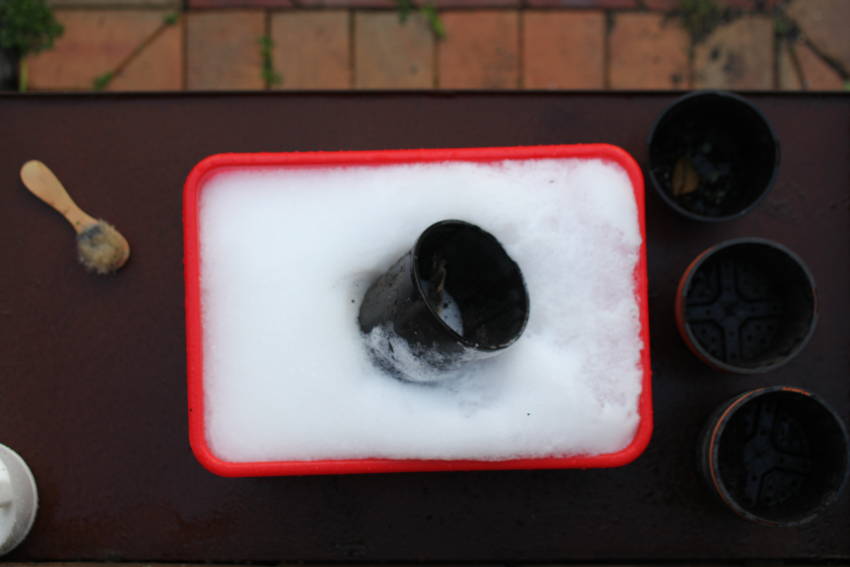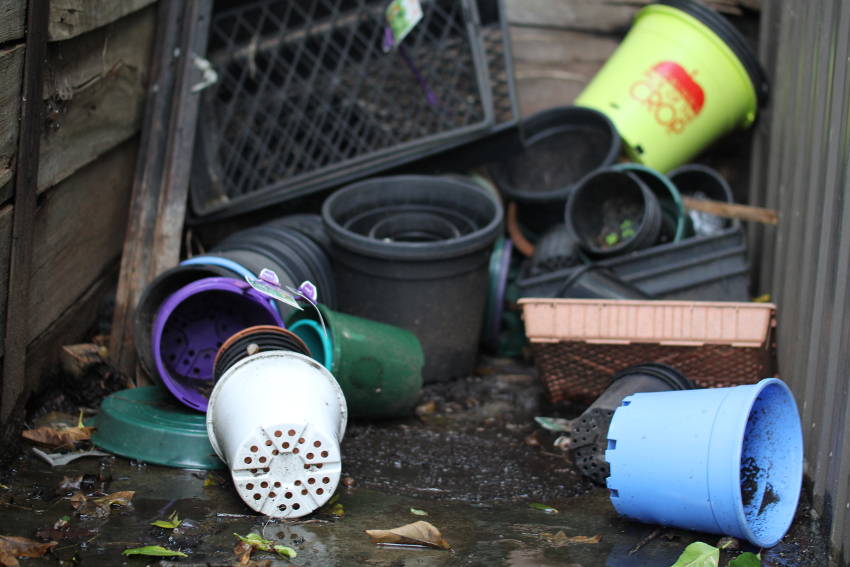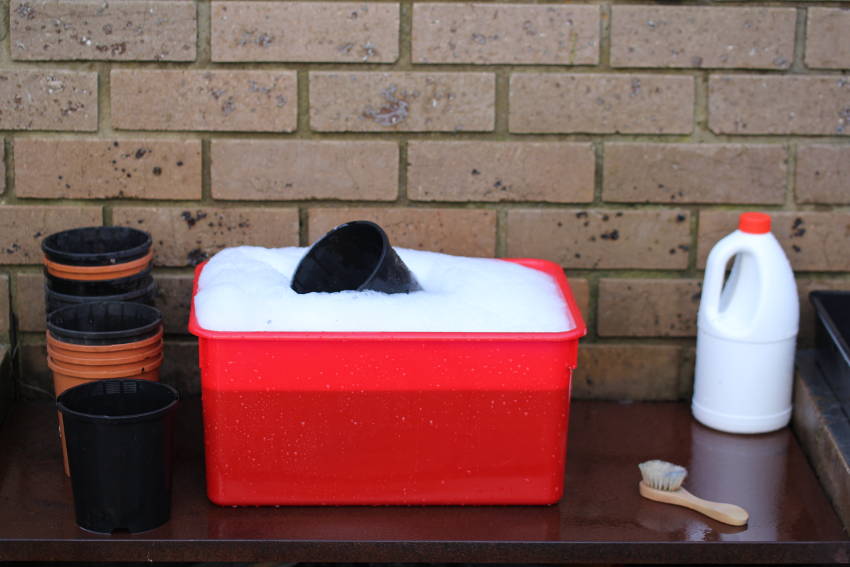Raising seedlings is a great way to increase the flexibility of your garden. However, there's one major drawback. In the relatively closed system of a container, it's easy for bacteria, viruses, fungal spores, and even pest eggs to build up and pass problems from one plant to the next as the pots are reused.
Giving the pot a wash before each use and always replacing the compost is a good start towards keeping these problems in check. But for the fullest possible protection, sterilising a pot before use is a good habit to get into. Luckily, sterilising containers is very easy, either using bleach for the quickest and best results, or without bleach if you'd rather keep chemical use to a minimum. Here's what to do.
How to Sterilise Plant Pots Using Bleach
Sterilising pots using bleach is fast and effective, and is suitable for all types of pots including clay, ceramic, plastic, and even metal. Here's the basic method.
- Remove as much of the old soil as possible. To avoid waste, you can add it to your compost heap or scatter it around outdoor beds, but it's better not to re-use it for future container planting.
- Scrape off any remaining mud clumps, mineral salt deposits, mouldy patches, and so on using a blunt knife edge, a firm brush or steel wool, getting the pots as clean as possible without damaging them.
- Wash the pots thoroughly in warm soapy water, made up using an ordinary dishwashing liquid or another household soap.
Once clean, the pots can be dried off and then put into storage until you next plan to use them. Alternatively, you can continue to the sterilising stage, which is best done shortly before any repotting to keep re-infection risks down. To complete the sterilising procedure, follow these steps.
- Whenever you're using bleach or other chemicals, it's sensible to wear rubber gloves and eye protection.
- Make up a mixture of one part household bleach to nine parts water. Put the pots into the mixture and ensure they're completely covered with no air pockets, and with space for the liquid to circulate.
- Leave to soak for at least ten minutes.
- Remove the pots and rinse them thoroughly to remove all traces of the bleach solution, then place them in a bucket of fresh cold water until you're ready to use them.
After going to this trouble, it's a good idea only to use a high-quality potting compost from a reputable source, and ideally soil that's labelled as sterilised. Otherwise, you risk immediately adding new pathogens back to the freshly sanitised pots.
Sterilising without Bleach
Using bleach for sterilisation in this way is perfectly safe, but if the idea using harsh chemicals as part of your gardening seems wrong, there are a few alternative methods.
- Using Vinegar
Vinegar is less chemically harsh than bleach, and also naturally biodegrades after use to reduce the impact on the environment. What's more, you may feel more comfortable using vinegar for pots hosting edible plants, even if the risk of leaving any bleach behind is virtually zero.
The overall procedure is the same as when using bleach, but the mixture should be made up in a ratio of one part vinegar to one part water. Also, increase the soaking time to between two and three hours to take account of the relative weakness of the sterilising fluid.
- Using an Oven
Many containers can also be sterilised using heat, although this is not suitable for plastic pots, painted ceramics, or particularly delicate clay pots which could shatter on a hot surface. But for suitably sturdy containers, simply warm your domestic oven to around 100°C, place the pre-scrubbed pots on a baking tray, and slide it into the oven. Leave for an hour or so, then turn off the heat and leave the pots to cool inside the oven before removing them.
- Using Brewers' Sterilising Tablets
Lastly, if you make your own wine or beer, you'll probably already have sterilising products available such as sodium metabisulphite or another brewers' treatment. These preparations can be used perfectly well for pots so long as you follow the instructions, but they can work out expensive unless you already have a bulk supply available. However, if you have some sterilising mixture left over from a brewing session, giving your pots a quick dip is a thrifty idea.
But whether you use bleach, vinegar, heat, or the home brewer's method, making sure all the pots you use are completely free of pathogens and pests will give your container gardening a strong foundation to build on.








